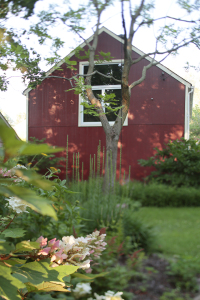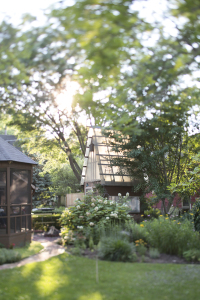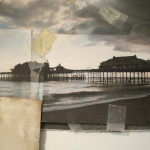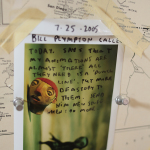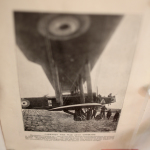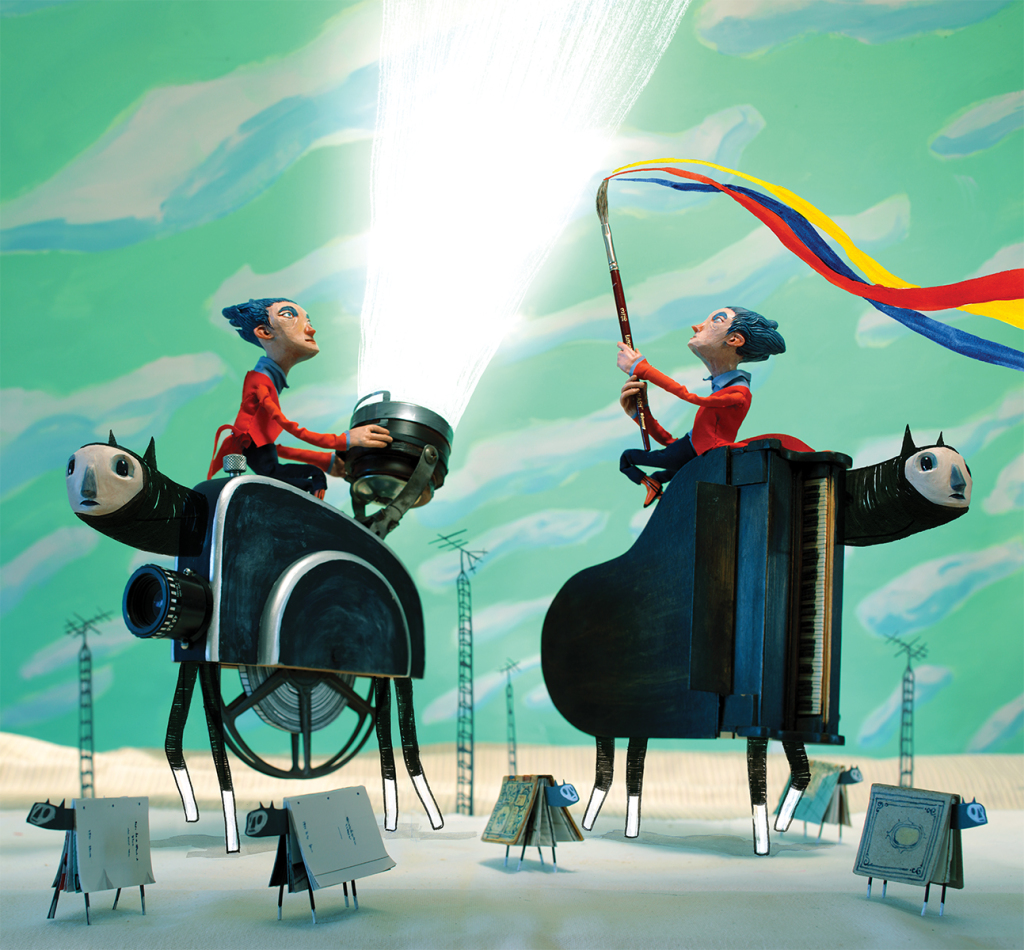Chris Sickels’s Studio Tour
Today on Tuesday Tours I’m very excited to share the Indiana garage studio of multi-faceted artist Chris Sickels. I love seeing artists who push the modes of illustration and Chris’s approach is definitely inspiring—he incorporates a multitude of materials, both 2D and 3D, to make his pictures come to life. Chris’s work has appeared in advertising (Nickelodeon, Target, Pepsi, Neiman Marcus, Microsoft), magazines (Forbes, The New York Times, the Washington Post, the Wall Street Journal, Wired), books (covers for Tor, Scholastic, Osborne McGraw-Hill), and animation. He has been honored by numerous illustration awards, including his recent Gold award in the Institutional category from the Society of Illustrators for his animations Holding Polluters Accountable PSA. Under the title of his studio—Red Nose Studio, he’s the illustrator of the children’s picture books The Beginner’s Guide to Running Away From Home, written by Jennifer LaRue Huget’s and Here Comes The Garbage Barge, written by Jonah Winter. When he’s not creating magic in his studio, he’s soaking up inspiration while riding his 1965 Harley-Davidson Pacer.
 Tell us a little bit about yourself and your creative medium.
Tell us a little bit about yourself and your creative medium.
At heart I am an Indiana farm boy. I grew up on a small family farm of about 500 acres, raising horses, cattle, swine and various crops. I went off to Cincinnati in the early nineties to study art and it wasn’t until my sophomore year when I discovered illustration. Around that same time the Wallace and Gromit shorts were on the animation fest circuit, Nightmare Before Christmas came out and from there I discovered the work of the Quay Brothers, Jan Švankmajer and further back to Vladislav Starevich. I graduated as a painter and my work eventually evolved into the 3D work I do today, from a process of slowly finding a way to combine my passion for puppet and set fabrication with my love for illustration.
How long have you had your space and how does it affect your creative process?
I have been in this garage for 13 years. It gets a little smaller every year, but it keeps my work on a manageable scale. If I had a larger space my work would be larger and more unwieldy.

Describe a typical work day. Do you have any rituals you do before you start creating?
I take the kids to school in the am and do my best to get as much as I can done before 5-6 pm. But other than that, not really, just beating my head on the table as I draw out ideas and digging around for the right piece of junk to use on any given day.
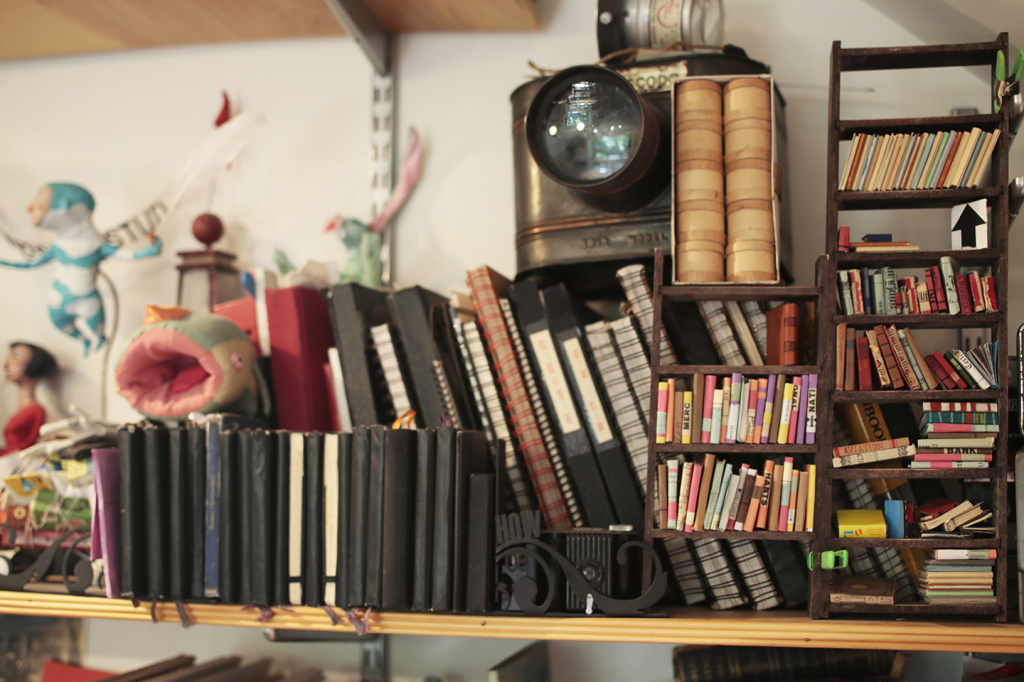
When was a time you had the most fun working in your studio?
It’s always something different, and that’s one of the reasons I like using so many creating aspects to what I make. Somedays the drawing is the best, somedays its the mess of painting large backdrops, and somedays it’s the quiet hand sewing that brings me peace.

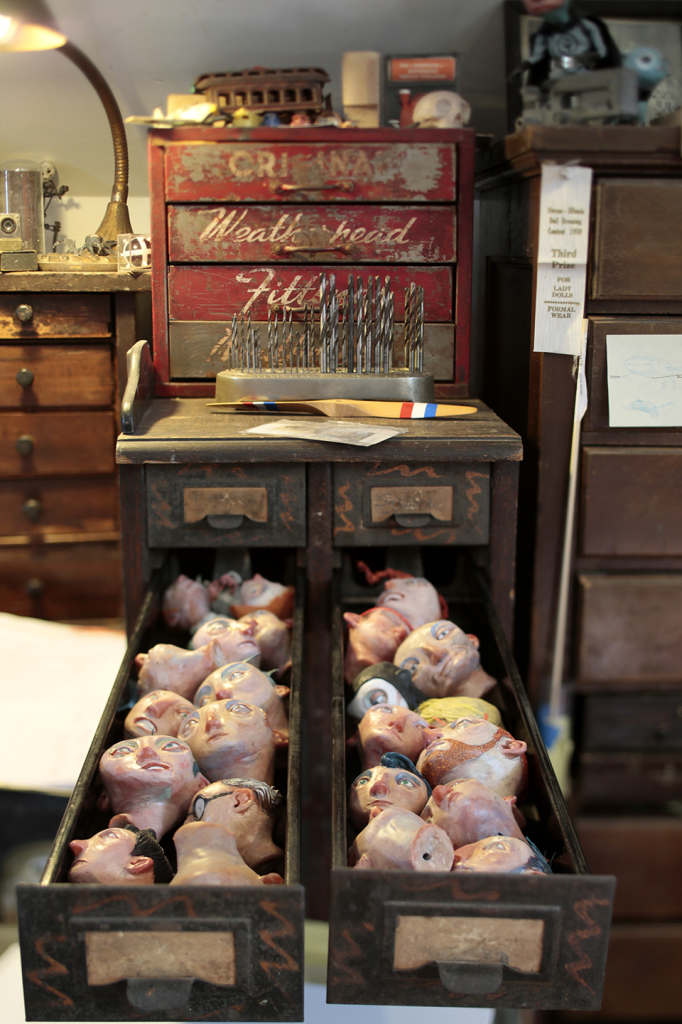
You’ve brilliantly mastered combining three dimensional objects and characters with two dimensional drawings and paintings. Do you think illustrating and selling nontraditionally illustrated books is more challenging?
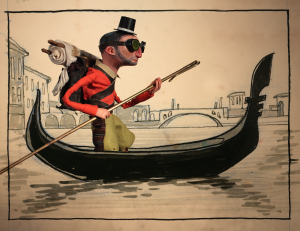 Art making for me has always been a challenge and I think that is what draws me to it. Sometimes my process can intimidate a client, or get in the way of the concept. So I feel that my communication skills have to help a client see that in the end its really just a 2-D painting/image—similar to many other illustrators out there. Illustrated books are another beast, although I think my work can survive in the kids lit world, I am not always sure that I can. For me it has to be a book that I can get 100% behind. Illustrating books is one thing, selling them is a mystery to me.
Art making for me has always been a challenge and I think that is what draws me to it. Sometimes my process can intimidate a client, or get in the way of the concept. So I feel that my communication skills have to help a client see that in the end its really just a 2-D painting/image—similar to many other illustrators out there. Illustrated books are another beast, although I think my work can survive in the kids lit world, I am not always sure that I can. For me it has to be a book that I can get 100% behind. Illustrating books is one thing, selling them is a mystery to me.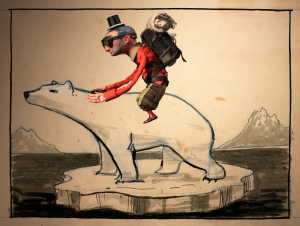
What do you do with all of your characters and props when you’re finished photographing them?
They get ‘filed’. I have shelves for the characters/ puppets and drawers for the props. It’s getting crowded in here…
If you could share a studio with anyone in the world, who would you pick?
I have always admired the material experimentation of Tim Hawkinson. I think we could both share a messy space.
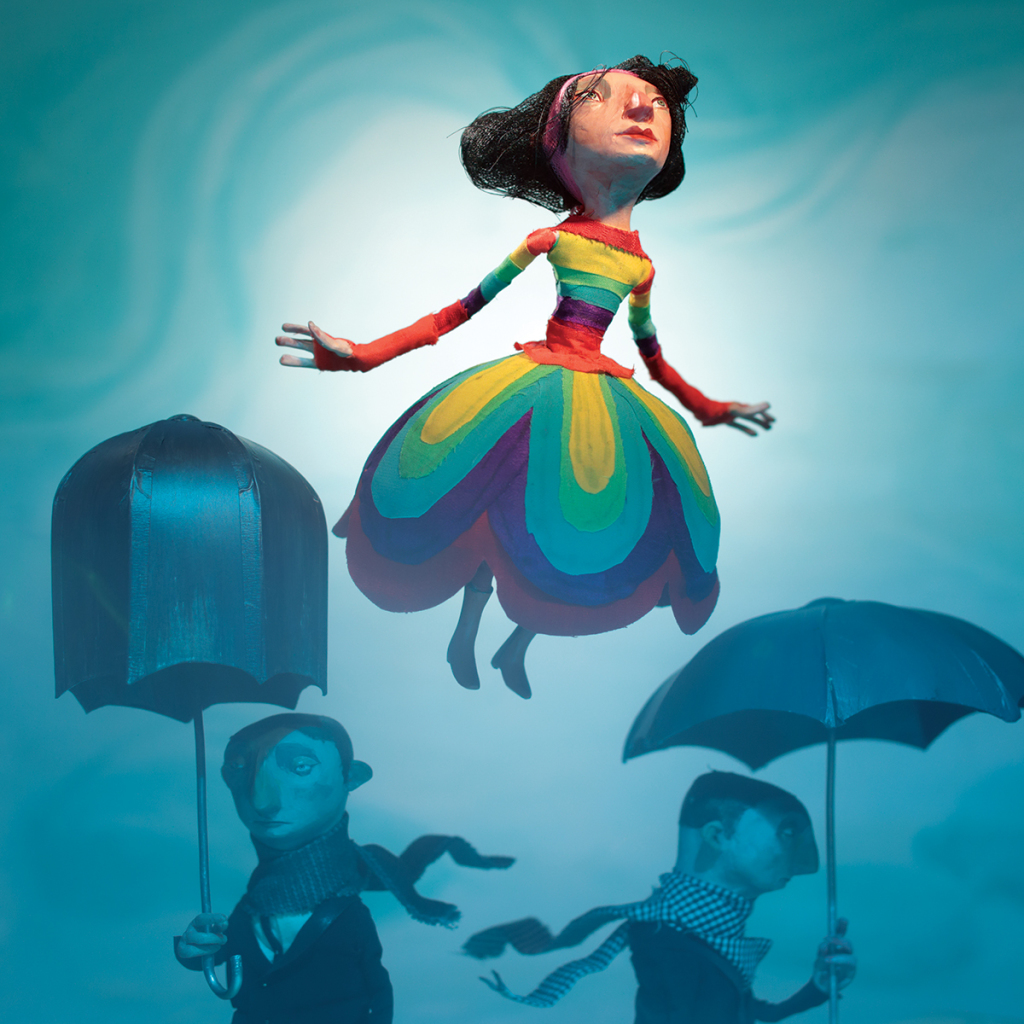
What is your greatest source of inspiration as a writer and artist?
Honestly I think it’s when I get out of the studio that gets my gears turning, that seems to be what gets my sketchbook moving.
If you could add a new tool or piece of furniture to your studio, what would it be?
I think an extra arm or two would suffice.

What advice do you have for people who want to make a personal space where they can be creative?
I don’t trust super clean and organized studios. No matter how much I admire them I think I would be stifled in such a space. My advice is to work with what you got and let it evolve as your work evolves.
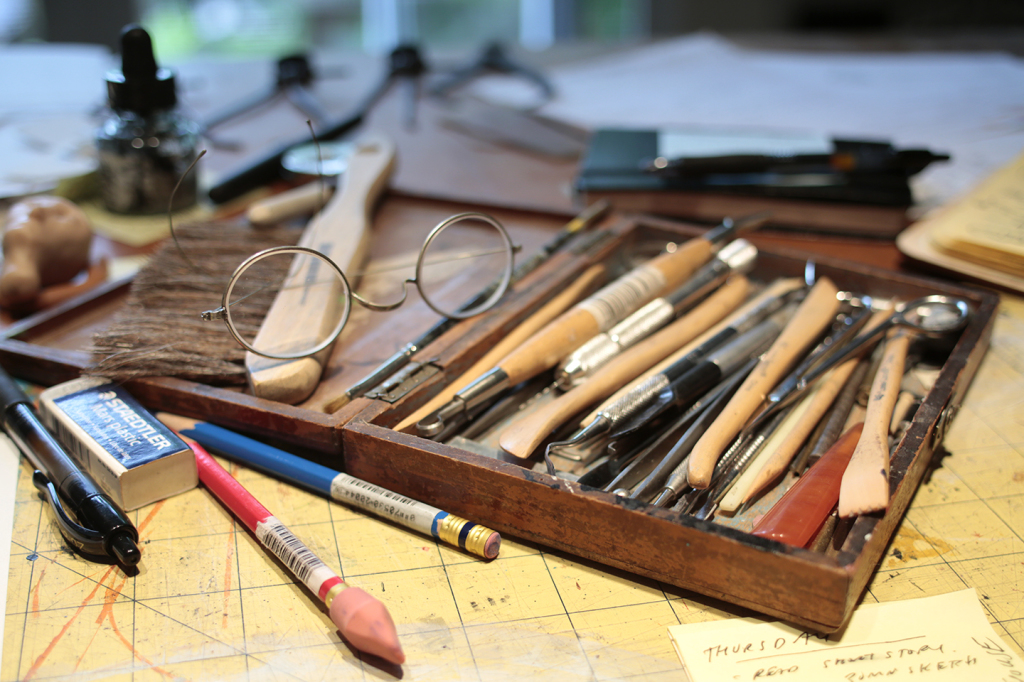
What’s coming up for you and where can we find out more?
The Secret Subway is a kids book that I illustrated coming out in 2016 by Schwartz & Wade. There is an animated short called Creosote that I hope to finish up shortly, about a stranded car that leaves its driver scanning the horizon for help. The driver finds a centaur with a drinking problem who offers a unique repair in exchange for a favor.
I also created the award-winning animated PSA, for Holding Polluters Accountable.
Other animation work can be seen on my Vimeo site and my Youtube site. My illustrations can be seen at: http://www.magnetreps.com and http://www.rednosestudio.com. And news and some of my process can be found on my blog and on Twitter.
Thank you, Chris! I love getting a chance to see all of your characters lined up on the shelves. Congratulations on winning the Illustrators Society award for your Polluters PSA—it’s a powerful piece!
Join us next week when illustrator Stephanie Graegin shares with us her cozy Brooklyn studio and some of her adorable illustrations.

